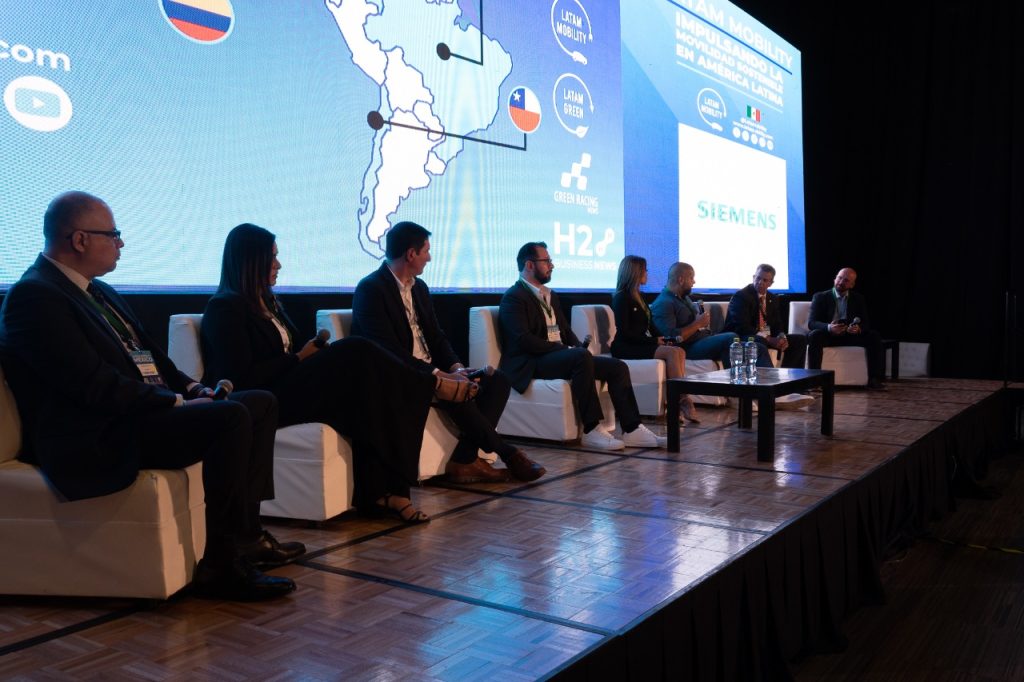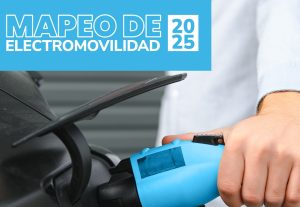Despite the great advances in electric mobility and charging infrastructure in Latin America, there are still many paradigms to be broken so that these environmentally friendly innovations can become widespread.
Against this backdrop, the “Latam Mobility: Mexico 2022” took place on October 11 and 12, where specialists and representatives of distinguished companies met in the panel “Current and future development of charging infrastructure in Mexico”.
The E-Performance & Smart Mobility Manager of Porsche México, Roberto Solares, offered details about the great impulse that the company has given to the energy supply network for electric vehicles.
He specified that Porsche’s path towards electromobility began in 2010 through approaches such as innovation, performance, sportiness and efficiency. In 2013 they presented the first hybrid car and in 2019, they dazzled the world with the electric Taycan with 500 kilometers of autonomy.
The German company’s contribution has been crucial with the installation of more than 600 residential chargers and nine dealerships with 175 kilowatt points. Solares also informed that they are working to consolidate the network on the main highways to guarantee safe travels.
The Porsche executive considers it vital to promote products, increase the range of electrified cars and implement the right public policies to end the paradigms surrounding these new technologies.

Related content: Porsche, Nissan, BMW, XC Power, Vitesco Technologies and LeasePlan Discuss Automotive Industry Advances and Prospects at “Latam Mobility: Mexico 2022”
Blink and its Customized Service
Blink Charging, a US company with 13 years in the market, enters the Mexican market not only to offer its wide range of smart chargers, but also to contribute with its sophisticated software to meet the needs of each company or user.
Patricia Baires, Business Development Latin America Manager of the company, said that in Mexico there is a huge potential to develop electromobility, which is why they are investing heavily in the region.
She said that Blink focuses its efforts on providing solutions tailored to the needs of each client in order to implement the necessary changes in an appropriate manner.
Baires emphasized that education in electromobility and trained personnel for the installation of infrastructure are key pillars for these innovations to take root in the region.
Masud Rabbani, Chief Business Officer of Wallbox Chargers, agreed with Baires that success lies in knowing the needs of each client for an efficient use of the electric grid.
“It is vital to know what type of user uses the car, what type of vehicle it is, the driving pattern to know how to manage charging. We have moved from home to public and semi-public charging innovating because it is not enough,” he explained.
With operations in 110 countries, Wallbox’s success is based on the design of all types of chargers at affordable prices, and they are confident that by the next decade electromobility will be massified in Latin America, a milestone that they assure will only be possible if all the actors involved work together for the common goal.
Siemens’ Technological Tradition
Horacio Ramos Cargo, Electromobility Director at Siemens, was another of the prestigious guests at the Latam Mobility meeting. He assured that having 175 years of history and 127 years of operations in Mexico is an important guarantee to generate confidence in consumers.
He highlighted that 60% of the installed capacity of chargers in Mexico are Siemens branded and they will continue working to expand these figures that place the company as one of the leading promoters of electric mobility.
Ramos said that in order to break paradigms it is necessary to define the business model and generate certainty for customers that when they travel to other cities they will be able to reach their destination without worrying about autonomy.
“We must understand that electromobility also contemplates travel planning, confidence that there are active chargers on the road and that they are intelligent, which is why we are investing in research and development, but we must face challenges such as incentives and standardization at the connector level,” explained the Siemens representative.
Evergo and its 100% Mexican production
Another major player in electromobility that offered its perspectives at the Latam Mobility conference was Evergo Mexico, through its Chief Commercial Officer, Daniel Abraham Lopez.
“We have 100% Mexican production supporting electric mobility, with an offer of more than 100 electrified models and energy supply network in alliance with partners such as Wallbox and Siemens.”
Lopez revealed that they are currently working on the first large public charging network in Mexico and aspire to be the largest in Latin America.
The Evergo representative explained that for the optimal use of new technologies it is important to understand the use of the vehicles in order to know what charge and equipment they require.
He assured that despite not having the incentives, they have made electromobility a reality with more than 3 thousand charging points, schemes where charging becomes a business without depending on the support of the automotive industry, which opens up the market.
In the case of the company Vehya, its LATAM Business Development Manager, Daniela García revealed at Latam Mobility that they are betting heavily on the Latin American market with the arrival a few months ago in Brazil and hope to expand to other countries due to the potential that exists.
“In our In our platform we guarantee the installation service through trained personnel, with the aim of creating an ecosystem of electrification and updating in the face of the market need.
Garcia considers it key to look for solutions at local level taking into account three fundamental aspects: public policy influence, end consumer and workforce education, and investment in technology for smart chargers and connected grid.
Finally, Hector Nuñez, Latam Director of Power Electronics, stressed the importance of energy storage in the electric mobility business.
He highlighted that the company is responsible for commercializing more than 2 gigawatts in solar storage and now they have moved that capacity to support the electromobility process. “Until recently we were very limited, now we have stations at home. The infrastructure in many countries is not adapted and we want to offer solutions with storage,” he said.
For Núñez there is still a lot of fear of change due to insufficient charging infrastructure, which is why private enterprises has to work hand in hand with governments to seek incentives to drive change.
He called on citizens and companies not to be afraid of change and to get into the world of electric mobility, since every day there is greater autonomy in vehicles, better technology with charging speed and fewer limitations.




